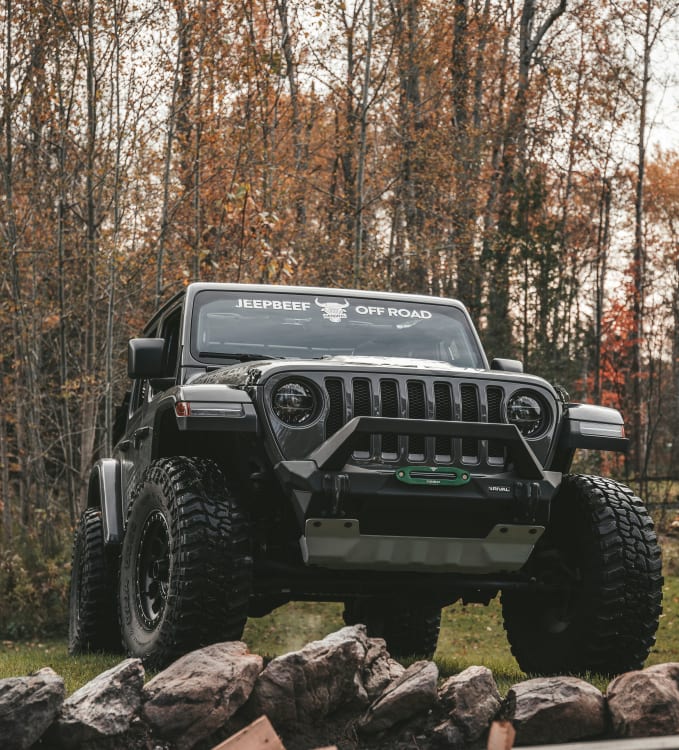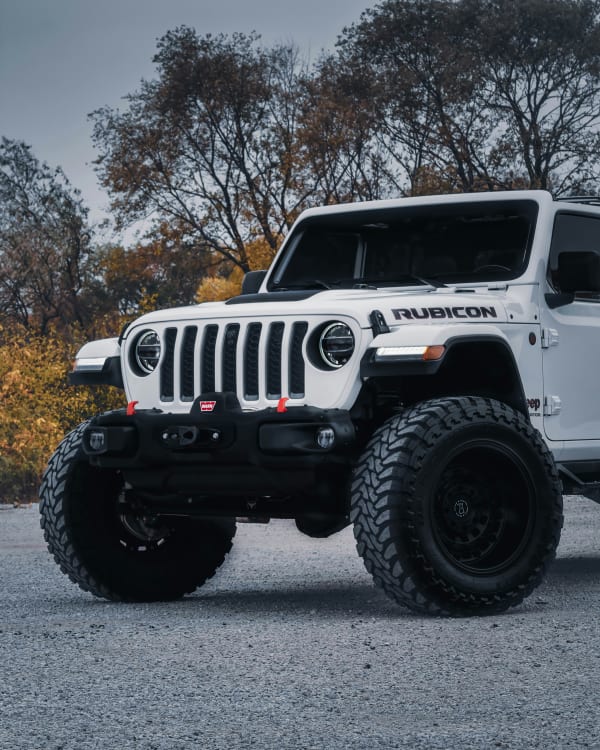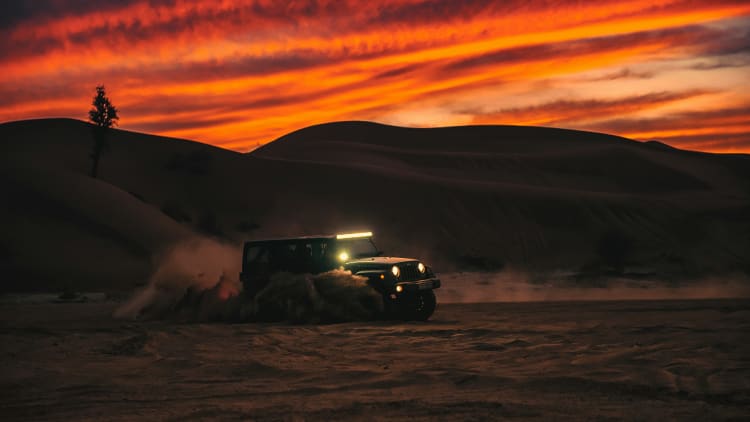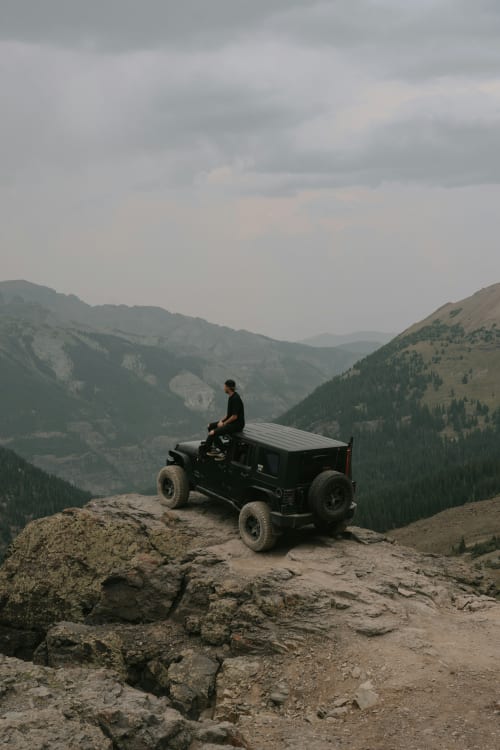If you’re itching to hit the trails, camp under the stars, and explore the great outdoors, overlanding is the way to go. And when it comes to picking a rig, Jeeps are often the first choice for adventure junkies. But the big question is: are Jeeps reliable enough for overlanding? Let’s break it down, throw in some real-world experience, and figure out if these iconic vehicles can handle the rough stuff.

Image credit: Unsplash
Why Jeeps Are Popular for Overlanding
Jeeps, especially the Wrangler and Gladiator models, are like the Swiss Army knives of off-road vehicles. They’re built tough, with solid axles, high ground clearance, and killer four-wheel-drive systems that can tackle mud, rocks, and sand without breaking a sweat. Plus, they’ve got a massive aftermarket scene, so you can customize your Jeep with beefy tires, lift kits, or even a rooftop tent for that overlanding vibe.

Image credit: Unsplash
Another reason Jeeps are a go-to is their community. Whether you’re stuck in the middle of nowhere or need advice on gear, Jeep owners are like a big, muddy family. You’ll find forums, clubs, and social media groups full of folks ready to help. But popularity doesn’t always mean reliability, so let’s dig into that.
Are Jeeps Reliable for Overlanding?
When you’re overlanding, you’re often miles from civilization, so your vehicle needs to be dependable. Jeeps have a mixed rep when it comes to reliability. On one hand, they’re tough as nails off-road. On the other, some models have had issues with electronics, build quality, or maintenance costs. Here’s the lowdown:
The Good Stuff
- Off-Road Prowess: Jeeps are designed to handle gnarly terrain. The Wrangler Rubicon, for example, comes with locking differentials and skid plates that make it a beast on rocky trails.
- Simple Design: Older Jeeps, like the TJ or JK models, have straightforward mechanics that are easy to fix in the field. If something breaks, you can often patch it up with basic tools.
- Parts Availability: Jeep parts are everywhere. Whether you’re in a small town or ordering online, you won’t struggle to find what you need.
The Not-So-Good Stuff
- Electronics Issues: Newer Jeeps, like the JL Wrangler, have fancy tech that can glitch out. Touchscreens, sensors, and wiring can be a pain if they fail in the wilderness.
- Maintenance Costs: Jeeps ain’t cheap to maintain. If you’re modding your rig with big tires or a lift, expect wear and tear on suspension or drivetrain parts.
- Fuel Economy: Overlanding means long drives, and Jeeps guzzle gas like nobody’s business. You’ll need to plan for extra fuel cans.
Older Jeeps vs. Newer Jeeps for Overlanding
When it comes to overlanding, not all Jeeps are created equal, and the debate between older and newer models is a hot one. If you roll up to a Jeep rock crawling event, you’ll notice the hardcore crowd often rocks older models, like a 1987 YJ or a 1999 TJ. Here’s why the old-school Jeeps have a cult following and how they stack up against the new ones.
Older Jeeps (AMC Era and Early Wranglers)
Back in the AMC days (think 1970s to 1980s), Jeeps were built like tanks with a Volkswagen-style philosophy: they might not be fancy, but they’d keep chugging along. The visors might fall off, the heater knobs might snap, but you could drive an old CJ or early Wrangler through the desert and fix just about any issue with a basic toolkit. These Jeeps, like the YJ (1987–1995) or TJ (1997–2006), had simple engines, minimal electronics, and rugged designs that made them overlanding legends.
For example, the 4.0L inline-six engine in the TJ is practically bulletproof. It’s not winning any fuel economy awards, but it’s reliable and easy to work on. If you’re out in the boonies and something goes wrong, you can often MacGyver a fix with some duct tape and a wrench. Plus, parts for these older models are cheap and plentiful, thanks to the huge Jeep aftermarket.
Newer Jeeps (Post-2004)
Things started to change around 2004 when Chrysler (and later Fiat Chrysler) leaned into more modern powertrains, some of which were shared with Dodge minivans. The JK Wrangler (2007–2018) and JL Wrangler (2018–present) got more creature comforts, like better interiors and touchscreen infotainment, but their rugged reliability took a hit. The 3.8L V6 in early JKs, for instance, was underpowered and prone to issues, and the newer JL’s complex electronics can be a nightmare if they fail in the middle of nowhere.

Image credit: Unsplash
Newer Jeeps are still off-road beasts, with features like advanced traction control and locking diffs, but they’re more dependent on dealership diagnostics for repairs. If you’re overlanding in remote areas, a glitchy sensor or a fried ECU can leave you stranded, and you’re not fixing that with a pocketknife. Plus, newer models are pricier to maintain, especially if you’re running big mods.
Which Is Better for Overlanding?
If you’re all about reliability and simplicity, older Jeeps are hard to beat. A well-maintained YJ or TJ can handle brutal trails and be fixed on the fly, which is clutch for overlanding. But they lack modern comforts, and rust can be a problem if you’re not careful. Newer Jeeps, like the JL, offer better on-road manners and tech, which is nice for long drives to your trailhead, but you’ll need to be extra prepared for potential electronic gremlins.

Image credit: Unsplash
At the end of the day, it depends on your vibe. If you’re a purist who loves wrenching on your rig, an older Jeep is your jam. If you want a more polished ride and don’t mind the extra maintenance, a newer model can still get the job done.
How Far Are You Going? Long-Haul Overlanding vs. Weekend Warrior Trips
The reliability of a Jeep for overlanding also depends on how far you’re planning to push it. Are you a weekend warrior hitting local trails for a day or a short week-long trip, or are you going full-on nomad, driving across countries for weeks or months? The demands on your Jeep change big time based on your adventure style.
Long-Haul Overlanding (Weeks or Months Across Countries)
If you’re crossing borders, tackling remote deserts, or spending weeks on end in the wild, your Jeep needs to be a rock-solid companion. Long-haul overlanding puts serious strain on your vehicle—think constant vibrations from rough roads, extreme weather, and limited access to mechanics. Older Jeeps, like a TJ or YJ with the 4.0L inline-six, are often the go-to for this kind of trip. Their simple mechanics mean you can fix most issues with basic tools, and parts are widely available, even in far-flung places.
However, fuel range is a big concern. Jeeps aren’t known for sipping gas, so you’ll need extra jerry cans or an auxiliary tank for remote stretches. Newer Jeeps, like the JL, can work for long-haul trips, but their complex electronics are riskier when you’re weeks away from a dealership. For epic journeys, you’ll want to over-prepare: carry spare parts (like alternators or u-joints), invest in heavy-duty cooling systems, and know your rig inside out. A breakdown in the middle of the Sahara ain’t no joke.
Weekend Warriors (Day Trails or Short Trips)
If you’re more of a weekend warrior, hitting up local trails for a day or camping for a week, a Jeep’s reliability is less of a make-or-break deal. Both older and newer Jeeps shine here. A newer JL Wrangler or Gladiator is awesome for short trips, with comfy seats and tech like GPS or backup cameras that make the drive to the trailhead a breeze. Even if you hit a glitch, you’re usually close enough to civilization to limp to a shop.

Image credit: Unsplash
Older Jeeps are just as solid for these quick adventures. A YJ or TJ can handle gnarly day trails without the stress of long-term wear and tear. Plus, their lower cost means you can sink some cash into mods like a winch or better tires without breaking the bank. For short trips, you don’t need as many spare parts or fuel reserves, so the Jeep’s gas-guzzling nature is less of a headache.
What’s the Verdict?
For long-haul overlanding, an older Jeep’s simplicity and fix-it-yourself vibe give it the edge, especially in remote areas. You’ll need to plan meticulously, but it’s doable. For weekend warriors, both old and new Jeeps are reliable enough, and newer models add some nice perks for casual adventures. Either way, match your Jeep to your trip length and prep accordingly—nobody wants to be that guy stuck on a trail with a dead rig.
My Personal Experience
Last summer, I took my 2015 Jeep Wrangler JK on a two-week overlanding trip through Utah’s backcountry. Me and my buddy packed up with a rooftop tent, a cooler full of snacks, and a playlist of classic rock. The Jeep handled slickrock trails and sandy washes like a champ. But, I gotta admit, we had a scare when the check engine light popped on halfway through. Turned out to be a loose sensor, but it was stressful not knowing if we’d be stranded. A quick fix at a local shop got us back on the road, but it made me realize how important it is to know your Jeep’s quirks before heading out.
That trip taught me that Jeeps can be reliable if you prep right. I made sure to do a full tune-up before we left, and I packed spare parts like belts and fuses. If you’re not mechanically inclined, it’s worth learning some basic repairs or traveling with someone who is.
Tips to Make Your Jeep Overlanding-Ready
To make sure your Jeep doesn’t leave you high and dry, here are some tips to boost its reliability:
- Do Regular Maintenance: Check fluids, brakes, and tires before every trip. A little TLC goes a long way.
- Upgrade Smart: Mods like all-terrain tires or a winch are great, but don’t overdo it. Too many mods can strain your Jeep’s systems.
- Pack Recovery Gear: A tow strap, shovel, and traction boards can save your bacon if you get stuck.
- Know Your Route: Research your trails and have a map or GPS. Getting lost can turn a small problem into a big one.
- Test Your Setup: Take your Jeep on a short trip to shake out any issues before a big adventure.
Common Jeep Models for Overlanding

Image credit: Unsplash
Not all Jeeps are created equal. Here’s a quick look at popular models for overlanding:
- Jeep Wrangler (JK/JL): The classic choice. Great off-road, but newer models have more tech that can be finicky.
- Jeep Gladiator: A pickup with Wrangler DNA. Awesome for hauling gear, but it’s pricier.
- Jeep Cherokee (XJ): An older, budget-friendly option. Less comfy but super reliable if maintained.
So, Are Jeeps Reliable Enough?
Jeeps are solid for overlanding if you’re ready to put in the work. They’re built for off-road adventures, and with proper maintenance, they can take you to some epic spots. But they’re not perfect—electronics issues and high maintenance costs can be a buzzkill. If you’re cool with doing your own repairs and planning ahead, a Jeep can be your trusty sidekick.
For me, the freedom of cruising through the desert with the top down is worth the occasional headache. Just make sure you know your Jeep inside and out, and you’ll be ready to tackle the trails. Happy overlanding, y’all!





